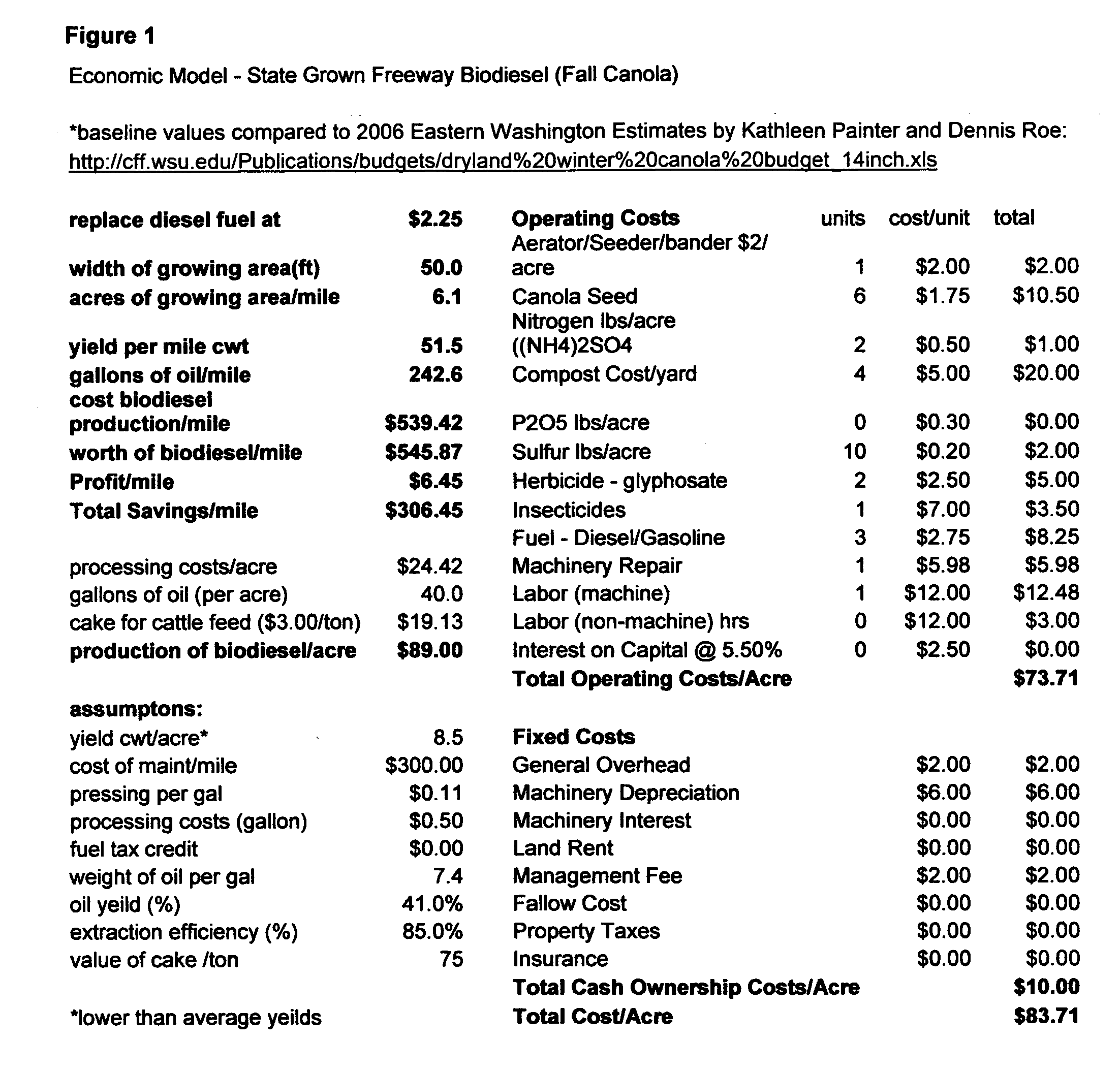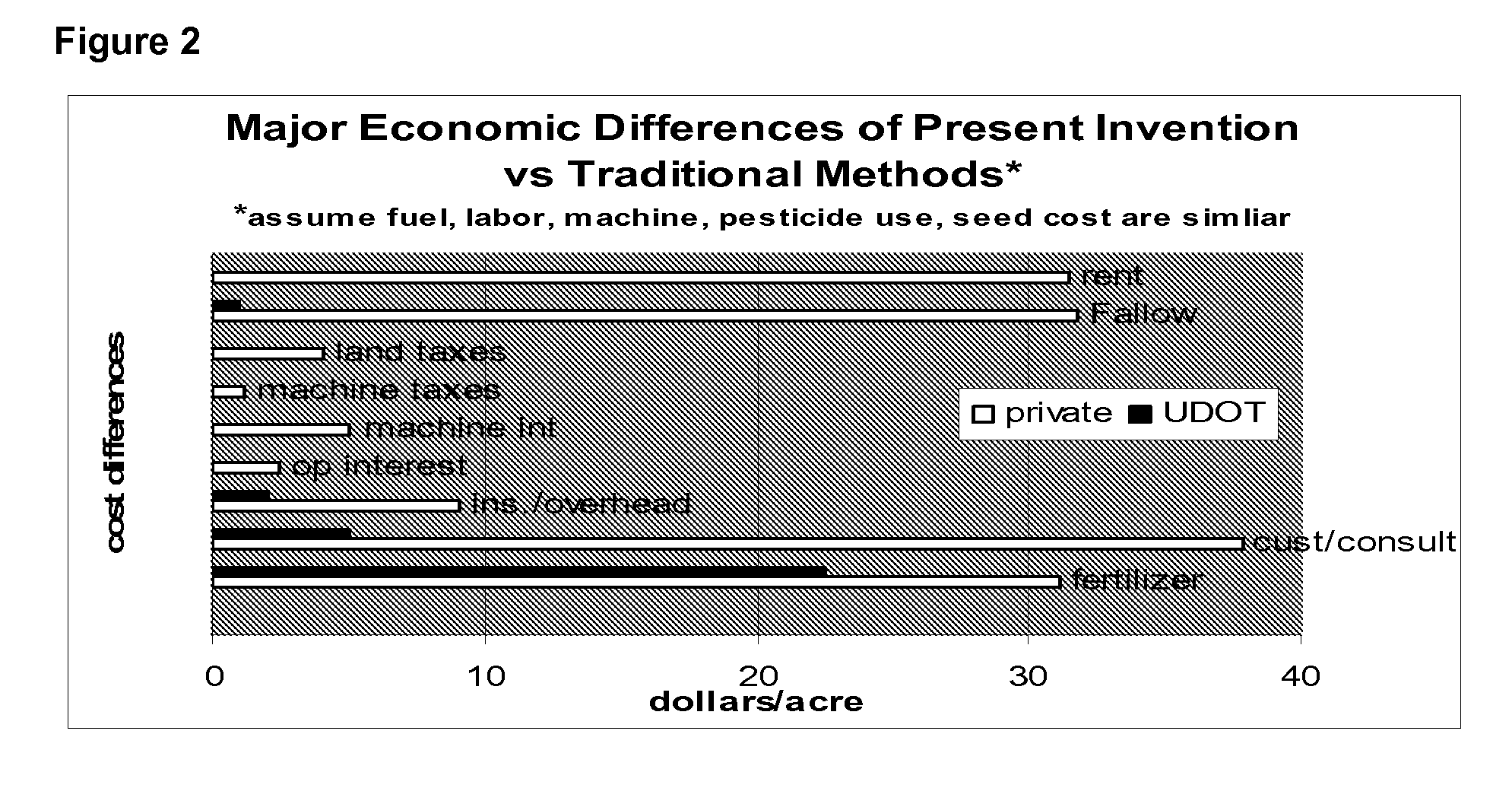Method to reduce maintenance costs and the carbon footprint in land management
- Summary
- Abstract
- Description
- Claims
- Application Information
AI Technical Summary
Benefits of technology
Problems solved by technology
Method used
Image
Examples
Embodiment Construction
[0030]Referring now to the invention in more detail, without limitation, the following details show the preferred method of decreasing maintenance costs and carbon footprints by growing biomass and processing it to biofuels. The biomass would be established on non traditional agronomic areas such as but not limited to; roadway shoulders and medians, airport runways and surrounding areas, public and private right of ways, military areas, unused construction areas, government and subsidy lands. The biomass would then be grown until, it is mature and ready for harvest. It will be harvested and processed for its fuel qualities and by products.
[0031]Utilizing this method will save current maintenance costs as shown in FIG. 1 and FIG. 2. FIG. 1 shows the planting of a biofuel feedstock crop along freeway shoulders resulting in the estimated yield would decrease the cost of maintenance of roadsides including mowing and controlling weeds to the state to $0.00 / mile and in some models give ba...
PUM
 Login to View More
Login to View More Abstract
Description
Claims
Application Information
 Login to View More
Login to View More - R&D
- Intellectual Property
- Life Sciences
- Materials
- Tech Scout
- Unparalleled Data Quality
- Higher Quality Content
- 60% Fewer Hallucinations
Browse by: Latest US Patents, China's latest patents, Technical Efficacy Thesaurus, Application Domain, Technology Topic, Popular Technical Reports.
© 2025 PatSnap. All rights reserved.Legal|Privacy policy|Modern Slavery Act Transparency Statement|Sitemap|About US| Contact US: help@patsnap.com



